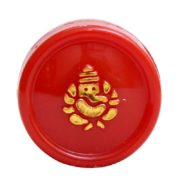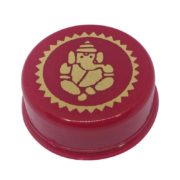Introduction: Understanding Finger Pain.
Finger discomfort is a common condition that may have a substantial effect on everyday life. Finding alleviation for finger discomfort, whether caused by repetitive action, injury, arthritis, or other underlying disorders, is critical for preserving quality of life. In this thorough tutorial, we’ll look at many approaches and ideas for reducing finger pain and improving overall hand health.
Tapentadol 200mg is a larger dose of the medicine used to treat moderate to severe pain. Tapentadol 200mg, like the 100mg dosage, is an opioid analgesic. Its mode of action includes binding to the mu-opioid receptor and blocking norepinephrine reuptake, resulting in dual pain relief benefits.
Identifying Causes of Finger Pain
Before diving into treatments, it’s critical to identify the underlying reasons of finger discomfort. Common reasons include:
Repetitive strain injury (RSI).
Repetitive activity, such as typing, gaming, or playing musical instruments, may cause RSI, resulting in finger irritation and pain.
Arthritis, namely osteoarthritis and rheumatoid arthritis, may cause joint pain, stiffness, and edoema in the fingers.
Finger injuries may cause both immediate pain and long-term suffering if not addressed appropriately.
Nerve Compression
Conditions such as carpal tunnel syndrome may compress the nerves in the hand and fingers, causing discomfort and numbness.
Tapentadol 100mg is a medicine used to relieve moderate to severe pain. It is an opioid analgesic. The major method of action is to bind to the mu-opioid receptor and impede norepinephrine reuptake. This multimodal mechanism helps manage pain by influencing both the opioid and noradrenergic pathways.
Top Strategies for Relieving Finger Pain:
1. Hand Exercises
Hand and finger exercises may assist to increase flexibility, strengthen muscles, and decrease stiffness. Include easy exercises such as finger stretches, thumb circles, and hand grips in your everyday routine.
2. Warm Compress.
Applying a warm compress to the afflicted fingers might improve blood flow, relax muscles, and relieve discomfort. Use a warm cloth or soak your hands in warm water for 10-15 minutes, multiple times each day.
3. Cold Therapy.
Cold treatment, on the other hand, may assist decrease inflammation and provide pain relief. To treat the afflicted region, use a cold pack or a bag of frozen peas covered in a towel for 10-15 minutes at a time.
4. Ergonomic adjustments.
Evaluate your office and everyday routines to find any ergonomic concerns that may be causing finger discomfort. To decrease hand and finger strain, make modifications such as utilising ergonomic keyboards, keeping good posture, and taking frequent pauses.
5. Topical treatments.
Over-the-counter lotions and ointments containing menthol or capsaicin may temporarily relieve finger discomfort by numbing the region or lowering inflammation.
6. Supportive Devices
Consider utilising supporting devices like finger splints or braces to stabilise and protect damaged or inflamed fingers while doing tasks that may aggravate discomfort.
7. Healthy lifestyle habits
Maintaining a healthy lifestyle may significantly reduce finger discomfort. Make sure you’re getting enough sleep, keeping hydrated, eating a balanced diet rich in anti-inflammatory foods, and managing stress efficiently.
Buy tapentadol online is a centrally acting analgesic (pain reliever) that treats moderate to severe pain. It is classed as an opioid analgesic and comes in both immediate and extended-release forms. Tapentadol binds to mu-opioid receptors in the central nervous system and inhibits norepinephrine reuptake.
When to Seek Medical Attention?
While these self-care measures may be successful in controlling mild to moderate finger discomfort, it’s important to seek medical assistance if:
- Pain continues or intensifies in spite of home cures.
- You have sudden or acute finger discomfort with no obvious explanation.
- Redness, swelling, and discharge are all indications of infection.
- Other significant signs of finger discomfort include numbness, tingling, and weakness.
Conclusion
Finger discomfort may be severe, interfering with everyday tasks and lowering quality of life. Individuals may recover control of their hand health and live pain-free by recognising the underlying reasons and using appropriate treatment measures.




